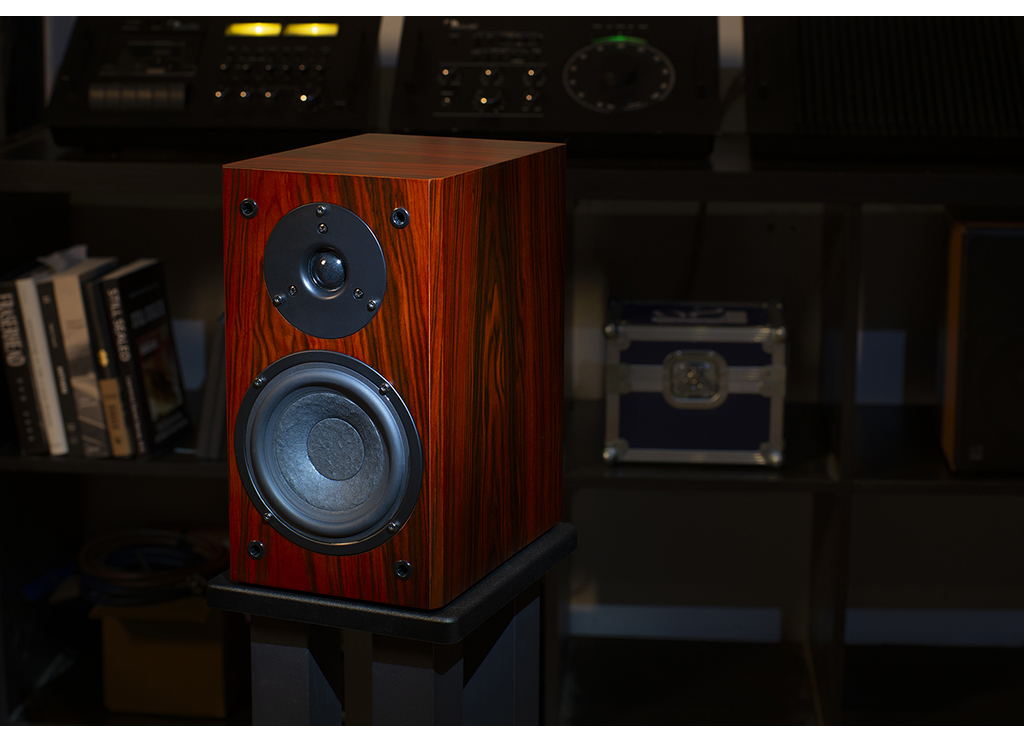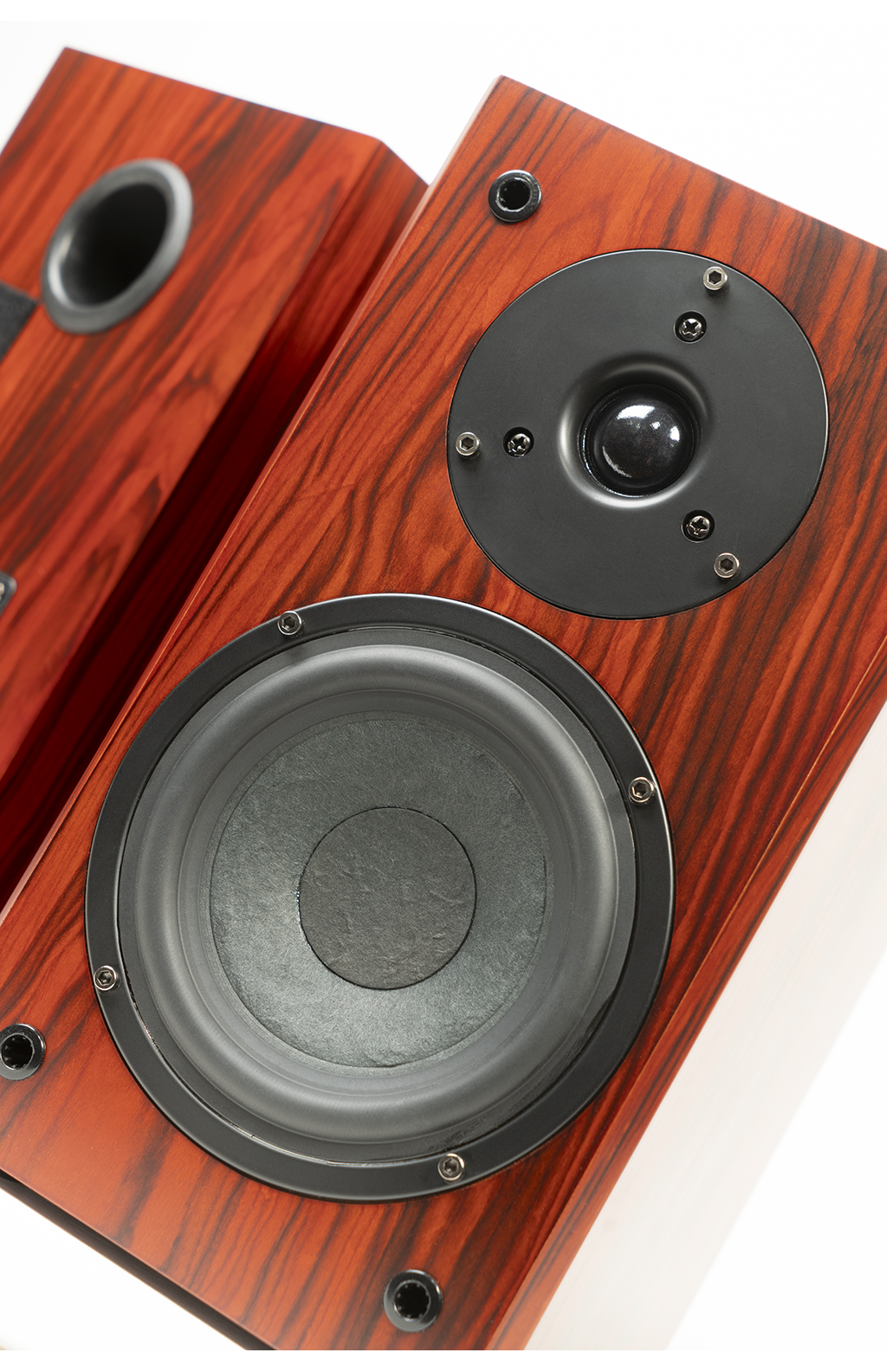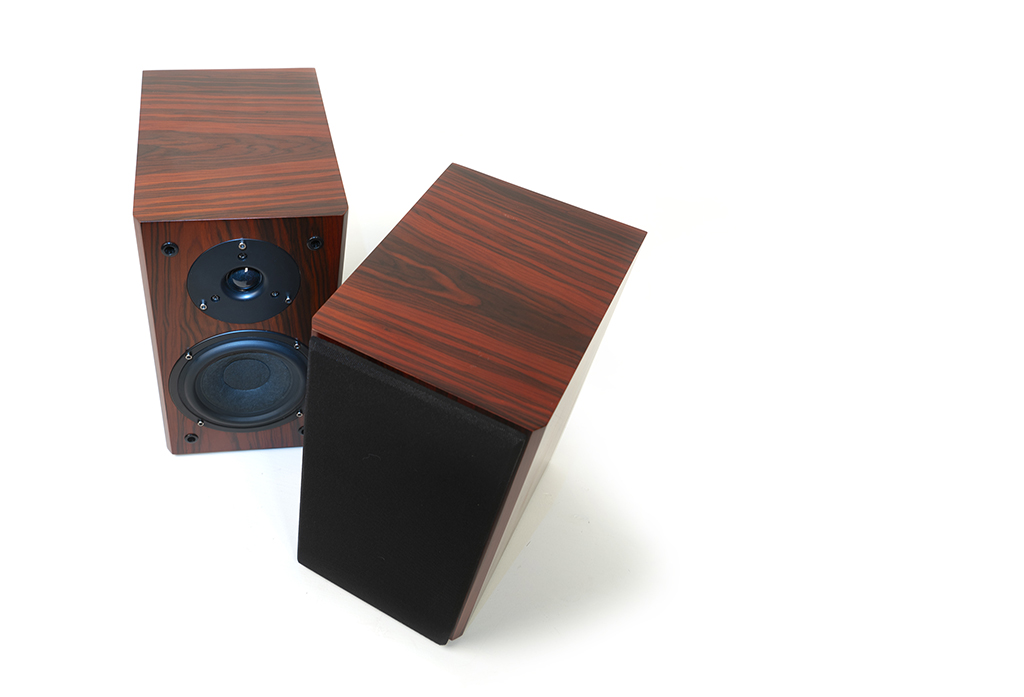The Vera-Fi Vanguard Scout Speakers

$299/pair
Verafiaudiollc.com
Listening to The Knack’s “Africa,” I tried a trick that I’ve seen at more than one hifi show – I hooked this $300 pair of speakers to about $200k worth of gear. Wacky as this seems, it illustrates two things: the ultimate performance envelope of said speakers, and how easy (or not) they are to drive with less than mega components. How many times have you listened to that totally affordable pair of speakers, only to bring them home and find out they sucked?
Guilty as charged, more than once. A high-power amplifier with the ability to deliver a lot of output current can take charge of a mediocre speaker and deliver results that your budget receiver can’t. So, the next step was to bring my vintage Pioneer SX-424 in from the bedroom closet. In case you’re too young to remember this one, it was a 12 watt per channel solid-state model at the bottom of the Pioneer lineup in the 70s. Back when a lot of early solid-state gear sounded dreadful, this low powered receiver was incredibly musical.
Swapping the Pioneer in place still makes for an excellent music experience. This is good news for those of you putting together one of your first system. If you don’t take advantage of Vera-Fi’s holiday special with their Vera-Link portable wireless mono amplifiers that will Velcro on the back of your Vanguard Scouts, you can rest assured they will work well with any budget amplification you can pair them up with. Regardless of amplifier and source choice, you should be able to assemble a really nice music system for $1,000 – $1,500 with the Scouts to anchor things.
The Vanguard Scouts combine a robust cabinet with a 5 ¼” paper cone woofer and a 1” soft dome tweeter. Vera-Fi’s Mark Schifter sent me some pictures of the crossover network, and there’s way more expensive components in this box than you’d ever expect out of a $299 pair of speakers. All good stuff.
Setup
I suggest setting the Vanguard Scouts up about 2-3 feet from the rear wall, and found that with the 24” Sound Anchors stands the tweeters were just about ear height. The Vanguard Scouts sound pretty good if you just “throw them in the room,” or put them on a couple of bookshelves. If you put them on top of a bookshelf or table, I highly suggest the ISO Acoustics desktop speaker stands for best results. Just click here to buy a set at Amazon. Again, we are NOT part of the Amazon affiliate program. This is for your convenience. These are the best small stands I’ve used with small speakers, offering a lot of adjustability and isolation.
Getting back to room placement, a good hour carefully fine-tuning room placement will amaze you. If you can start with the Scouts about 6 feet apart and the front baffle 24” from the rear wall and then nudge them about 6-8 inches up and back, you’ll hear the mid bass clean up and the lower bass get stronger. Make smaller adjustments from there, and when you nail the perfect balance, make note. Ditto for distance between the speakers. Move them apart about 6-12 inches at a time until the stereo image just falls apart and it sounds like two separate speakers, and then back till the image forms again. Tweak the toe in for maximum high frequency transparency and you’re done! You’ll be amazed at how much more music these small monitors can deliver.
The Vanguard Scouts have a listed sensitivity of 84.5db/1-watt and work equally well with modest tube or solid-state power. Equally good results are achieved with the 50wpc T+A Caruso R and the PrimaLuna EVO100 tube integrated, so there’s no limitations there. Tellurium Q Blue II speaker cables make for a great pairing and is an incredible bargain. Your preference will dictate what works best for you. If your musical tastes lean more towards jazz, acoustic music and female vocals, you might dig a tube amp a little more, while those of you more on the rock, hip-hop and techno side of the fence will enjoy the additional bass grip from a solid-state amplifier.
As with any highly resolving small monitor, try to use stands with the most mass you can get and be sure to use blu-tack, or something similar to optimize the interface between stand and cabinet. With speakers this size, every little bit of setup finesse makes a difference.
Further listening
Most listening was done in my main room which is 24 x 36 feet, and these little speakers really put on a great show in a room this size. (Vera-Fi does have a small sub on the way, so stay tuned) Obviously, with room gain, they work incredibly well in a smaller room, and listening in our back bedroom which is 11 x 14 feet was perfection. The quality of the bass delivered might even make you think twice about bothering in a smaller room.
Going off on a prog rock bender, Roon sent me to a great early 70s French band, Ange. Think Yes, King Crimson, and early Roxy Music all in one. Playing dense music fairly loud reveals how well the Vanguard Scouts keep their composure at this level instead of flattening out – you’ll have to push them pretty hard for that, and they give ample warning.

Thanks to a gentle transition between drivers, vocal and acoustic music sounds incredibly natural through these speakers. A wide range of tracks from Aimee Mann to Diamanda Galas all sound convincing. Tone, texture, and timing are also way beyond what you might expect at this price.
Just like the handful of classic small speakers that many of us have enjoyed for decades, the Vanguard Scouts sacrifice extreme frequency extension on the top and bottom of the range, for excellence at what it does handle. I suspect this will keep you happier with said speakers for a lot longer time than something that just grabs you on a quick demo.
In the end…
Much of the internet buzz on these speakers already is in comparison to a few great small speakers like the original Realistic Minimus-7, (and I’ve got a pair of those headed my way on EBay, so we’ll have a video on that soon, as well as a comparison to my vintage A/D/S 400i’s) but the speaker that really came to mind was the Spica TC-50 if you happen to remember those. Of course we still have a pair, but they rarely get played because the tweeters are no longer available and they were very easy to blow.
Thanks to modern drivers, the Scouts seem very robust, and they possess a lot of the soul that this great American mini speaker produced. A tremendous midrange, smooth highs, and mid bass accuracy instead of muddy mid bass, compromised to goose the low end. It’s hard to believe these are only $299/pair. Back when gasoline was $6/gallon, it cost more than this to fill up a Dodge RAM truck! Going further back, the Spica TC-50s were $450/pair.
It’s worth mentioning that a big part of the success of these speakers is the manufacturer direct model. If we were looking at a $20k preamplifier, I’d tell you to stick with something from one of the majors because of a service, support, and resale perspective. But when you’re looking at a $300 pair of speakers from one of the majors, the big manufacturers just can’t do it this inexpensively. By the time dealer and distributor markup is factored in, I’d be shocked if the least expensive B&Ws have more than 20 bucks invested in the drivers and crossover network. It is what it is.
The Vera-Fi Vanguard Scout speakers are a true triumph for music lovers on a tight budget. And with that, I’m going back to the Knack and blasting “Good Girls Don’t.” Highly recommended.
For those feeling in the stocking stuffer mood, here’s a direct purchase link to the Vera-Fi Vanguard Scouts. And check out the bundle price with a pair of Vera-Link amplifiers! REVIEW HERE.
https://verafiaudiollc.com/products/best-audio-products/vera-link-53126868




